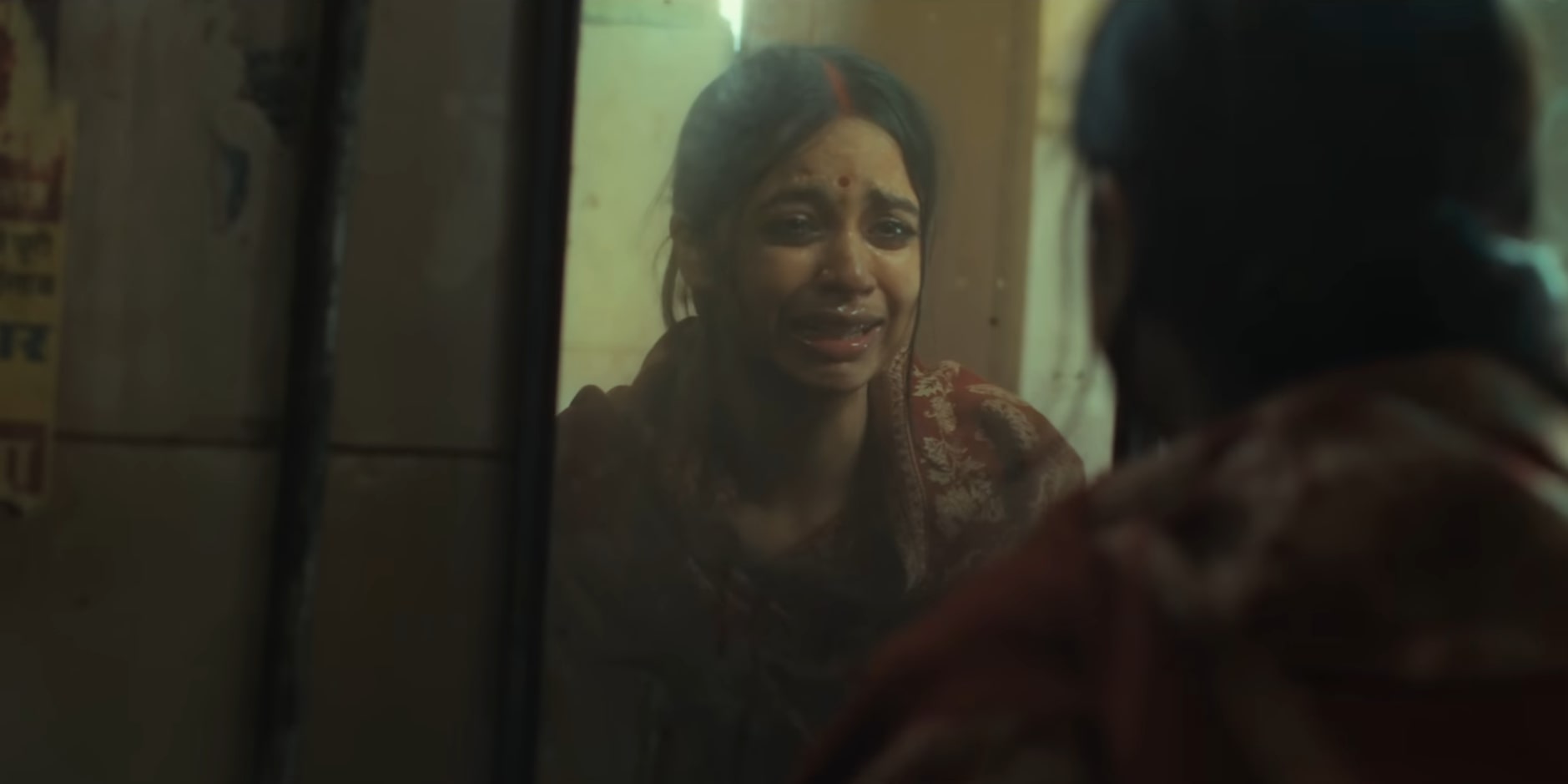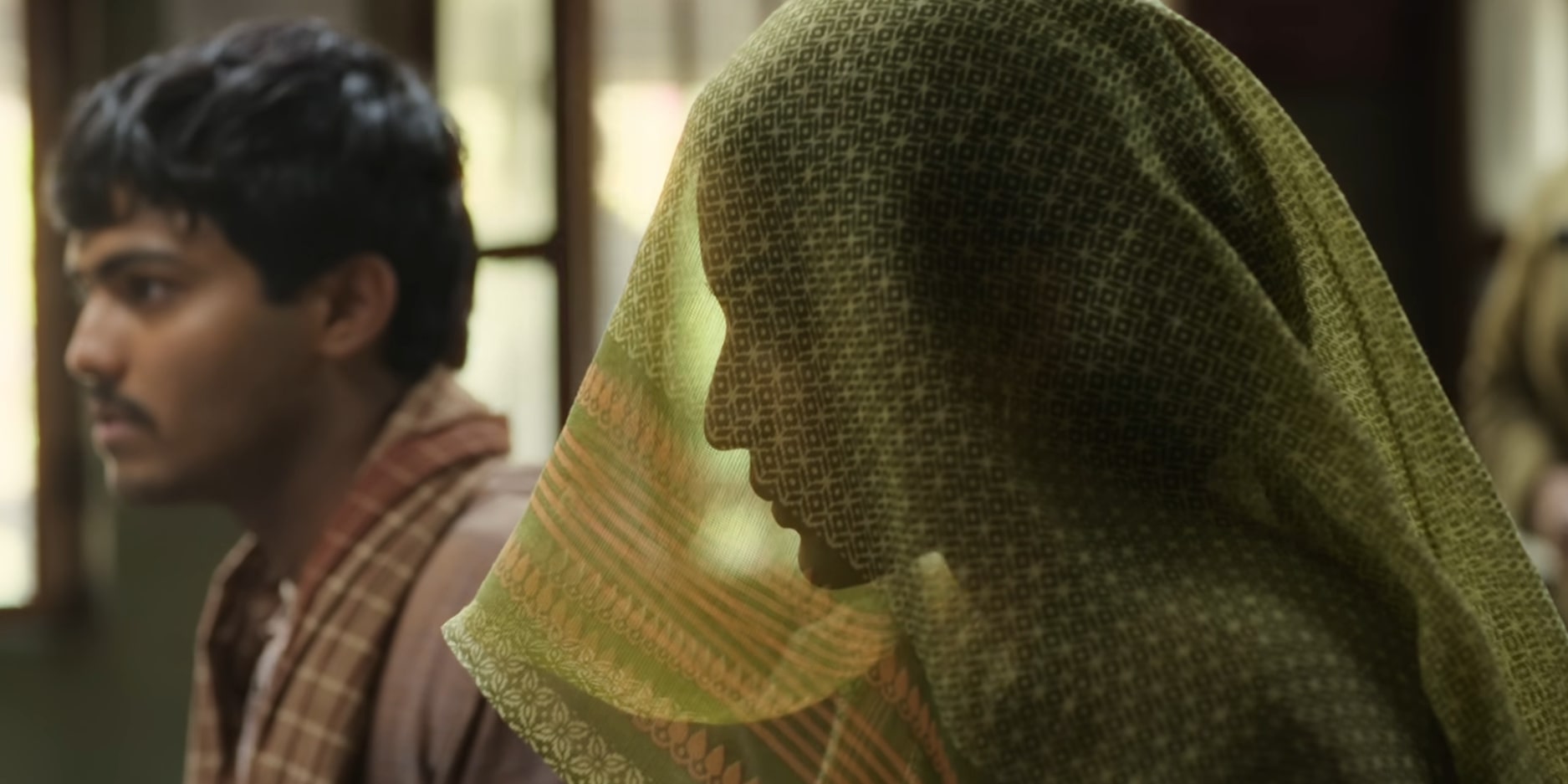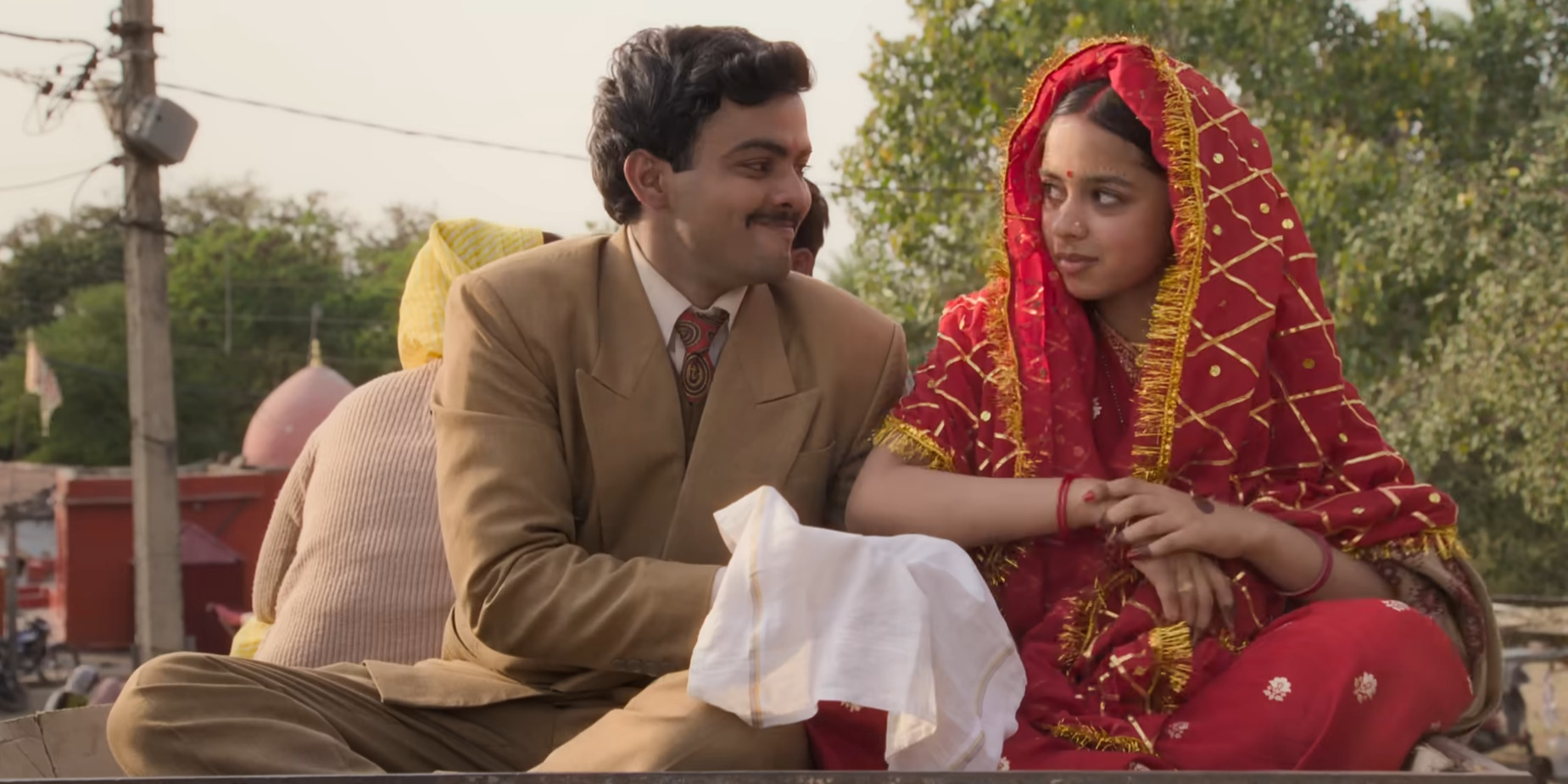Under the direction of Kiran Rao, ‘Laapataa Ladies’ narrates a lighthearted tale of two brides inadvertently switching places in a train, leading to a humorously chaotic journey of self-discovery and womanhood. Taking place in the fictional Indian state of Nirmal Pradesh during the early 2000s, the story follows newlyweds Phool and Deepak, as well as Jaya, the bride whom Deepak accidentally takes home. Upon realizing his blunder, Deepak and his family head to the local police station to report Phool missing. However, they lack any photographs of Phool, and thus a wild goose chase begins, with the comical police inspector creating his own tangent in the investigation.
While Deepak and family embark upon an earnest search, Phool is stuck at an unknown railway station, completely lost. Hopeful that Deepak will come looking for her, the displaced bride begins to sheepishly piece together her own course of action. Having been thrust into the open world by herself for the first time, Phool is led down a path of immense discovery. Contrasting Phool’s naivety is Jaya, who is knowledgeable in the ways of the world and delicately navigates her way through the predicament with reclusiveness and intrigue. With the film deftly touching upon prevalent societal themes in a time lacking mobile phones and the internet, questions arise regarding the origins of such a fascinating tale.
Laapataa Ladies Is Based on a Story by Biplab Goswami
‘Laapataa Ladies’ is based on an award-winning screenplay, ‘Two Brides,’ written by Biplab Goswami, and adjusted for cinema by Sneha Desai. The story resonated deeply with Kiran Rao, who decided to adapt it into a movie for its lighthearted exploration of deeply entrenched themes and issues in Indian society.

In 2019, Biplab Goswami won second place for ‘Two Brides’ in the first Cinestaan Storytellers Contest, with his prize being presented to him by none other than Kiran Rao’s then-husband, Bollywood star Aamir Khan. Impressed by his work, Khan shared the screenplay with Rao, who immediately became enamored with it. “It was saying something much more than what just the plot was saying,” she shared in an interview. “It resonated deeply with me and I thought it’s a great opportunity to explore a wide variety of situations or issues we face, whether we’re married or young women going to be married or going to study. Or whether it’s older women who find themselves in a routine rut.”
Rao perceived parallels between her own life and the journey of the women in the screenplay. The veils of the brides prevent them from seeing and being seen, causing them to lose their way. Having entered Bollywood after a master’s degree, Rao too felt as though her vision had been obscured by a veil as she tried to make a niche category of films. Taking years off from directing after her debut in ‘Dhobi Ghat,’ Rao gathered experience. Upon refining her craft and reading Goswami’s work, she realized the importance of reaching a wider audience by wrapping societal exploration in the disarming package of humor.
The director compared her own situation with that of Phool, who upon becoming lost, comes across help from unlikely places, eventually realizing her own capability. While Rao concurred that her privilege allowed her choices in marriage, career, and divorce, she was all too aware of the struggles of contemporaries and women in general when it came to finding a space for themselves within marriage. “I’m not against the institution of marriage at all,” she said in the above-mentioned interview. “In fact, I wanted to tell this story in a way that women are encouraged to find spaces for themselves, even if it’s within the marriage or within the family. I didn’t want to endorse any massive revolution or breaking of ties.”

Biplab Goswami came up with the idea for ‘Two Brides’ during his travels over the country. He noticed that many communities in certain parts of the country still held stringently conservative views about marriage and women, only allowing them to travel with draping veils hiding their faces. Kiran Rao herself has extensively journeyed by train for the first twenty years of her life. Through her work in the non-profit work in Paani Foundation, Rao ventured into village territories of Maharashtra, seeing the realities of rural India at a grassroots level. The experiences partially fueled the understanding behind ‘Laapataa Ladies.’
While director Kiran Rao’s experiences fueled the creative vision behind ‘Laapataa Ladies,’ the film takes its story from Biplab Goswami’s ‘Two Brides.’ The story was further worked upon by writer Sneha Desai before becoming a screenplay for ‘Laapataa Ladies.’ Despite not being a true story, the film touches upon many cultural realities and explores societal norms regarding women and marriage.
Read More: Best Indian Shows on Hotstar


You must be logged in to post a comment.